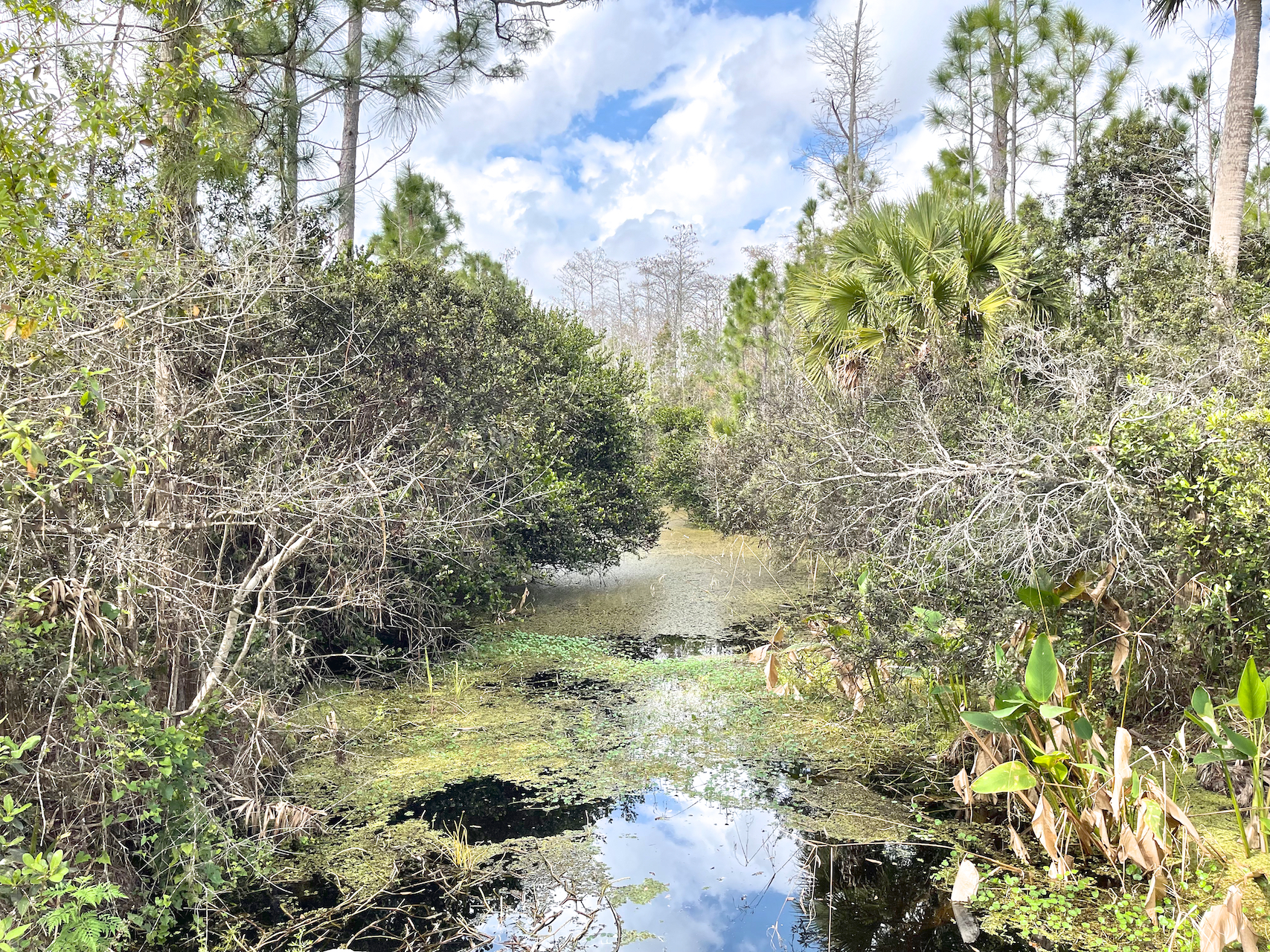
Hobe Sound, a city of 13,163 is positioned at the southern end of environmentally-sensitive Martin (named after Governor Martin) County. It has been stated that at Hobe Sound's front door lies the Gold Coast and that at her back door lies the Treasure Coast. Thus, Hobe Sound can lend to both while retaining its proud heritage and unique personality. Hobe Sound's proximity to the coast affords immediate access to the Atlantic Ocean and the deep-channeled Intracoastal Waterway, a 1,200-mile (1,900 km) water route that provides a sheltered passage for boats along the eastern seaboard.
Johnathan Dickinson State Park, the largest state park in Southern Florida with 11,500 areas is located in Hobe Sound. It offers biking, boating, cabins, canoeing, fishing, kayaking, hiking, and horse trails.
Shortly after the turn of the 20th century, Henry Flagler built his railroad along the east coast of Florida passing through Hobe Sound. This gradually created many opportunities including jobs, the birth of tourism, and other related industries.
During the land boom of the 1920s elaborate plans were announced for Hobe Sound by the Olympia Improvement Corporation. Their goal was to create a town, in Greek style, where motion pictures could be produced. Street names bore the Greek theme with names such as Zeus, Saturn, Mercury, Mars, Olympus, Pluto and Athena. For a brief time Hobe Sound was renamed "Picture City" and plans were presented for a movie picture production center. The boom collapsed after the 1928 Okeechobee hurricane and the original name was restored. Street names remained, however, as did the cement streetlights along Dixie Highway.
In 1924, the building which soon would become the new schoolhouse in Hobe Sound was constructed. The Martin County Board of Public Instruction secured the use of the new school building from the Picture City Corporation in 1925, and in October of that year, the Olympia School opened. The school was designated the "Picture City School" of Martin County. It remained in use as a school until 1962. There is currently a local interest in restoring the school, now known as the Apollo School.
Other mementos of the past are gone, including the ice plant, which was south of Bridge Road, and the old train station, which now, refurbished and relocated west of Hobe Sound, serves as an office building for Becker Groves and the Texaco station east of the Winn-Dixie plaza.
The name of Hobe Sound comes from the name of the Jove or Jobe Indians, one of the Native American groups that lived in the area before European settlement. The Spanish pronounced the name "Ho-bay," which has evolved into the current name "Hobe" (which sounds like "robe").
The earliest recorded European contact occurred in 1696 when a British ship, the barkentine (three-masted ship) Reformation, sailing from Jamaica to Philadelphia sank close to the shore north of Jupiter Inlet, carrying 25 passengers and crew and a cargo of sugar, rum, beef, molasses, and Spanish currency. The small Quaker party, including its most notable passenger, Jonathan Dickinson, encountered and received aid from the Jove Indians. Hobe Sound received its name by 1699, according to the Florida WPA Guide.
Parts of Hobe Sound were included in the 12,000 acres (49 km2) of the Gomez grant given by Spain to Don Eusebio in 1815. In 1821, Gomez sold 8,000 acres (32 km2), including Jupiter Island, to Joseph Delespine for $1 per acre.



